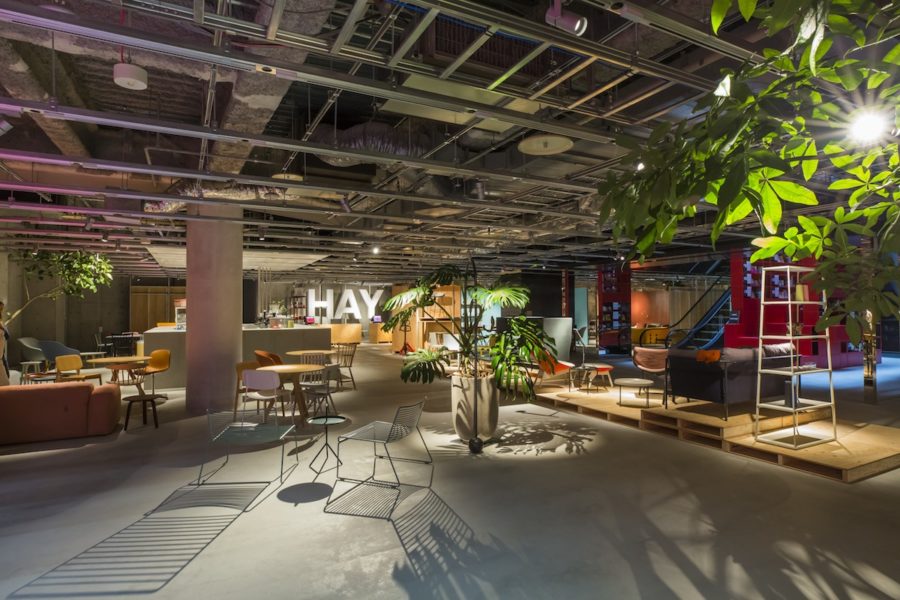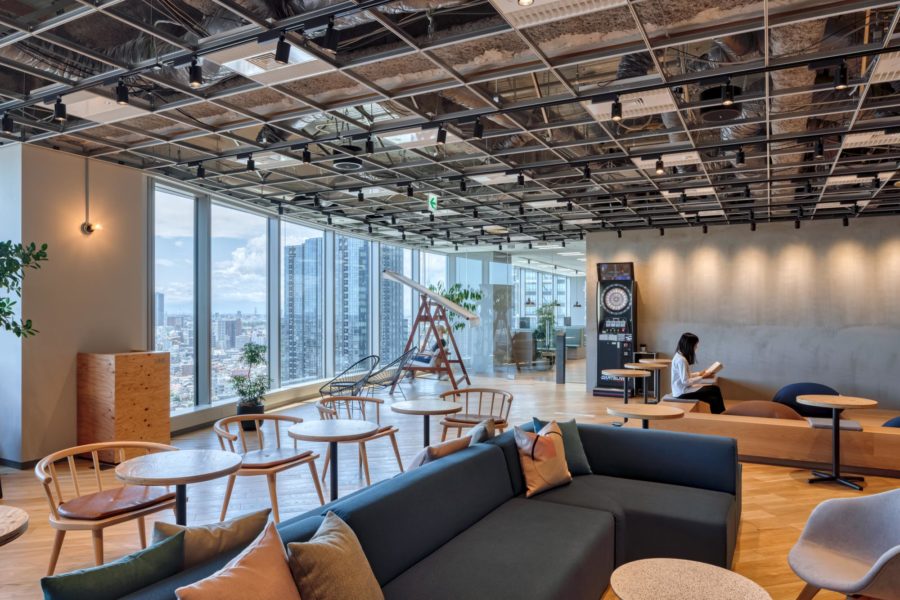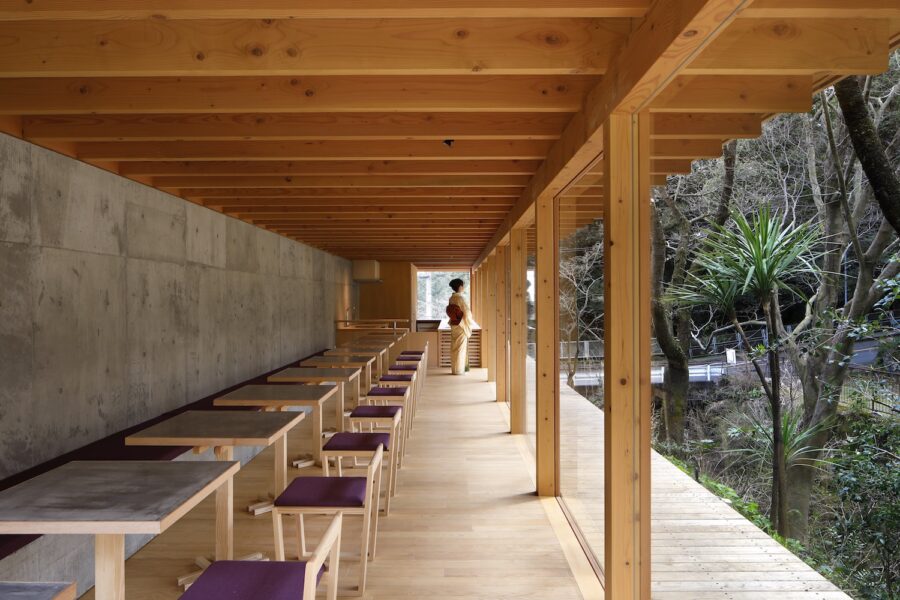里山が広がる地域に、クライアントのおばあさんが独りで暮らしていた。
おばあさんの生活を見守り、かつ家族の生活を成り立たせる方法を考えた結果、おばあさん宅の向かいに小さな家を建て、その間を行き来する「1.5世帯の暮らし」にたどり着いた。
決め手はこの地で何十年も営まれたおばあさんの生活を極力変えないということだった。
おばあさんの家は緩やかな丘の上に位置しており、そこから遠くの山々を眺めることができた。
しかしこの家が建つことによってその景色の広がりを遮ってしまうことが懸念された。
そこで今までの開放感を少しでも残せるように建物を分棟形式とし、その間に外部空間を設けることで視線の抜けをつくった。
外部空間はおばあさんの家の玄関先から奥に広がる山の端を感じることができるよう寸法を決定している。
この外部空間は「つなぎの間」と呼ばれ、ここを経由しながら生活が展開する。
食事をしたらつなぎの間を通って居間へ。お風呂に入ったらつなぎの間を通って2階の寝室へ。
常に外部が密接に関わり、日常生活と周辺環境との結節点が生まれている。
緩やかな暮らしの分節は、生活スペースと仕事スペースの分離、来客時における公私の分離、また家族同士の距離感の調整に寄与する。
2階も含めてすべての窓を掃き出しとすることによって、家のどこにいても豊かな自然が家の中に溢れ、身体がこの場所に溶け合うような一体感を得ることができる。
雄大な地球環境に包まれていることを感じさせるこのような「開かれた家」のつくりが、住み手と大地との関わりを鮮明にし、安心感につながるのではないかという期待をもっている。(武保 学)
An open house that snuggles up to leave the gap of the line of sight
The client’s grandmother lived alone in an area of satoyama.
After thinking of a way to support her and her family, they decided to build a tiny house across the street from the grandmother’s house and live a “one-and-a-half-family” lifestyle, moving back and forth between the two houses.
The deciding factor was to make as few changes as possible to the lifestyle of the grandmother, who had lived in the area for decades.
The grandmother’s house was located on a gently sloping hill from which she could see the mountains in the distance.
However, there was concern that the new house would block the expansion of the view.
In order to preserve as much of the openness as possible, the house was divided into two separate buildings, and an exterior space was created between them to allow the eye to pass through the house.
The dimensions of the exterior space were determined so that the view from the entrance of the grandmother’s house could be felt from the edge of the mountain spreading out behind the house.
This external space is called “Tsunagi-no-Ma,” through which the daily life of the house develops.
After eating a meal, one goes through the Tsunagi-no-ma to the living room. After taking a bath, you go upstairs to the bedroom through Tsunagi-no-ma.
The outside is always closely connected to the inside, creating a nexus between daily life and the surrounding environment.
The gradual division of life contributes to the separation of the living and working spaces, the separation of public and private matters when guests visit, and the adjustment of the sense of distance between family members.
By having all the windows, including those on the second floor, open out, the house is filled with the richness of nature, allowing the residents to feel as if they are one with this place.
We are hopeful that creating such an “open house” that envelopes the magnificent global environment will clarify the relationship between the inhabitants and the earth and lead to a sense of security. (Manabu Takeho)
【two house】
所在地:三重県伊賀市
用途:戸建住宅
クライアント:個人
竣工:2018年
設計:きりん
担当:武保 学
構造設計:安江一平(ワークショップ)
家具:西川木工
カーテン:fabricscape
造園:庭アトリエ
施工:最上工務店
撮影:山内紀人
工事種別:新築
構造:木造
規模:地上2階
敷地面積:136.22m²
建築面積:58.29m²
延床面積:108.39m²
設計期間:2015.05-2018.01
施工期間:2018.01-2018.10
【two house】
Location: Iga-shi, Mie, Japan
Principal use: Residential
Client: Individual
Completion: 2018
Architects: kirin architects & associates
Design team: Manabu Takeho
Structure engineer: Ippei Yasue / WORKSHOP
Furniture: Nishikawa mokko
Curtain: fabricscape
Landscape: NIWA ATELIER
Contractor: Mogami komuten
Photographs: Norihito Yamauchi
Construction type: New building
Main structure: Wood
Building scale: 2 stories
Site area: 136.22m²
Building area: 58.29m²
Total floor area: 108.39m²
Design term: 2015.05-2018.01
Construction term: 2018.01-2018.10








